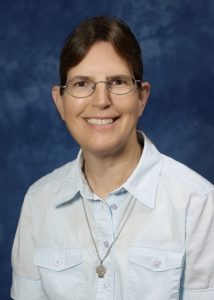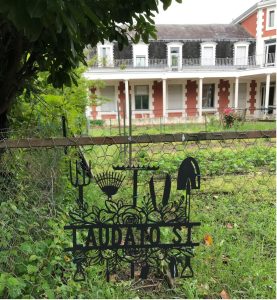 On June 25, Sister Mary Jo Stein, a Daughter of Charity, gave the 12th annual William K. Collinge Lecture (named after my father), sponsored by the Interfaith Center for Peace and Justice and St. Francis Xavier Church. The title was “Being Good Relatives in the Community of God’s Good Earth.”
On June 25, Sister Mary Jo Stein, a Daughter of Charity, gave the 12th annual William K. Collinge Lecture (named after my father), sponsored by the Interfaith Center for Peace and Justice and St. Francis Xavier Church. The title was “Being Good Relatives in the Community of God’s Good Earth.”
Sister Mary Jo sought to address all “pilgrims on our common journey” while speaking from her Catholic home ground. She drew especially on Laudato Si’ (“Praised Be”), a 2015 document of Pope Francis, subtitled “On Care for Our Common Home.” Francis advocates a new way of thinking, which he calls “integral ecology,” in which we recognize that “everything is interconnected.” Environmental problems (for example, climate change and biodiversity loss) are interconnected, and environmental problems are interconnected with social problems. Climate change, for instance, is a leading cause of the influx of refugees and migrants in the Mediterranean and at our southern border. “The cry of the earth and the cry of the poor” must be heard together.
A video Sister Mary Jo showed explained that integral ecology enables us to see ourselves as part of nature, “part of a complex web of interconnected relationships that we may never fully understand.” But in modern times, we have come to see ourselves as standing outside of nature, “lords and masters of creation entitled to plunder her at will.” We extend this attitude, which Francis calls the “technocratic paradigm,” to other human beings, such as workers and the residents of nations whose resources we wish to exploit.
Sister Mary Jo said climate change, in particular, requires us to undertake a change of heart and a change of way of life. In our own lives, the four areas in which we can most readily implement integral ecology are energy, food, land, and “investments.” She offered a series of examples of how we could do so to be good relatives.
We can reduce our energy consumption and carbon footprint (greenhouse gas emissions) through using LED lights in our homes and electric or hybrid vehicles. We could walk or cycle more and use a clothesline rather than a dryer in good weather.
 We can reduce meat consumption; beef has the largest carbon footprint, and vegetables have the least among protein sources. We can eat our leftovers and avoid food waste. For instance, we can eat locally produced foods in season by patronizing farmers markets. We can avoid excessive packaging.
We can reduce meat consumption; beef has the largest carbon footprint, and vegetables have the least among protein sources. We can eat our leftovers and avoid food waste. For instance, we can eat locally produced foods in season by patronizing farmers markets. We can avoid excessive packaging.
Our lawns, with their chemical fertilizers and pesticides, are designed to reduce biodiversity. We can increase local biodiversity by planting native species and keystone plants to promote biodiversity. Sister Mary Jo recommended joining the Homegrown National Park movement at http://www.homegrownnationalpark.org.
She used “investments” in a very broad sense. We can invest our time in local good works, such as community gardens or the Gettysburg Green Gathering’s glass recycling program. We can invest our political energies in advocating environmentally sound practices. And yes, our money: we can invest in renewable energy, not fossil fuels, and we can avoid plastics when we shop.
Sister Mary Jo concluded that none of us individually can do all that it takes to save the environment. But each of us has unique gifts to offer for the well-being of the earth’s community.
Originally published by the Gettysburg Times.
